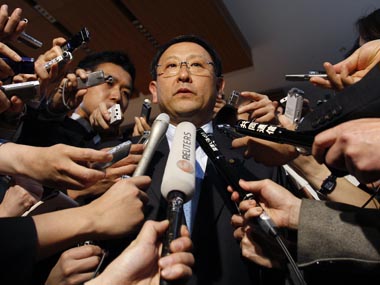• Don’t bother to remember their beats. That’s irrelevant. No matter what they cover, they will be interested in the product or person you represent. [caption id=“attachment_5128” align=“alignleft” width=“380” caption=“If the client is important, the journalists would definitely flock to you. Yuriko Nato/Reuters”]  [/caption] • Of course they want an ‘interaction’ with your client. They’re for it. It doesn’t matter whether their publication carries interviews. Or even if their publication covers the area in which your client operates. Your client is all that matters and they will see that if you email them three times. They’ll thank you for it. • Send out emails, yes, but follow up with a phone call if they don’t respond immediately and positively. That thing they say about emails saving time? Rubbish. The human touch is important and & neglected in this hustling, bustling age. • Always call their cellphones, not the landlines that are listed on their visiting cards. That way you can reach them when they’re out for a drink or getting some ‘me time.’ Or early in the morning after a production day. They will appreciate the gesture, since they would otherwise miss out on your important launch / event / interaction. And never call from your cellphone. This way, if they ever need to call you back late on production night to confirm something, they’ll only have your office landline and they’ll get your voicemail. This saves ‘me time’ from being interrupted and the journo will remember this and respect your remarkable work:life balance. Respect is important. • Never send them links to large files or to your FTP directory. It would make the poor dears work extra hard to download them, and, besides, FTP facilities are so unnecessarily complicated and it will save your company time and money if you don’t use them. Instead, send them large attachments which will fill up inboxes. This will ensure that your large attachments get their exclusive attention since they now won’t get mail from pesky bosses, colleagues and the subjects of their stories. This will ensure that they never mark your ID as junk mail which will henceforth be delivered straight to the trash. p.s. It may happen that your email might not get to its destination. You should ensure this does not happen by sending your message & with the large attachments twice. Thrice for luck. • Oh, and never put the text of your press release into the body of the email. That is so last century. Instead, attach a large PDF file with plenty of pictures and fonts of many colours. This will demonstrate your aesthetic sense and technical skillz. (In your covering note, do remember to use SMSese and refer to the recipient as ‘u.’ Not only will they appreciate this liberty with the language amidst the shackles of their style guides and the frowns of their desk people, this also gives your email a nice non-businessy touch.) • Even if they’re not working for a daily, which may need photos of your event (which they didn’t send someone to cover despite your emails and phone follow-ups), to fill up space on a slow news day, send them pictures. Many of them. And remember:high-resolution images. This shows that you are highly professional and you know that they need print-quality images. • When you call, slip in a mention of the car that will pick the journalist up, and the place where they will be staying, even if you know that their publication has a no-freebies policy. Journos are easy to influence with a bit of posh treatment. And their publications won’t mind; after all, these are recessionary times, and the news media is facing more cut-backs then ever before. • Time your emails so that they land up in the thick of the production cycle. That way the journalists’ super-fine-tuned news antennae will recognise that they are important; they will then yell ‘Stop The Presses!’ (every journo secretly wants to do that) and include your press release, dropping the story about Mr Big’s secret deal / mistress. • Add them to your newsletter mailing lists without asking them. You’re doing them a favour. They lead busy lives, so they don’t have time to opt in, and they will appreciate your taking the trouble to do it for them. They’re simple creatures, easy to please, without interests of their own, and your company’s daily email will be a bright spot in their dull lives.
If you want to get on their good books, there’s no need to follow their beats. Add a little personal touch, treat them posh and add a couple of freebies. They’ll definitely return your calls then.
Peter Griffin is Editor, Special Features, at Forbes India and ForbesLife India. He also handles social media for both publications. In previous lives, he was a space seller, PR consultant, advertising creative director, voice-over artist, RJ, TV host, web producer and content architect, freelance travel writer, columnist, consultant to NGOs, some of them simultaneously and often for real folding money. He has blogged since 2003, and has co-founded the South-East Asia Tsunami & Earthquake and Mumbai Help blogs (which, with other similar initiatives later became the WorldWideHelp group and the writers’ community, Caferati. He is a keen student of collaboration and online culture. He also writes poetry, and is inordinately proud of having got paid for a few poems. He is @zigzackly on Twitter. see more


)
)
)
)
)
)
)
)
)



